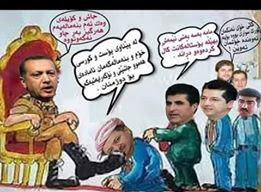Discussion and review of the press conference of the representative of the National Council of Resistance of Iran in the United States in connection with the disclosure of the drone construction projects of the clerical regime. Together with Mr. Alireza Jafarzadeh, Deputy Representative of the National Council of Resistance of Iran in the United States
To view the full conversation, refer to this link
On Wednesday, the U.S. Representative Office of the National Council of Resistance of Iran (NCRI-US) revealed the Revolutionary Guards (IRGC) Quds Force’s massive UAV program details. This revelation once again underlines the necessity to curb Tehran’s terrorist activities.
The NCRI-US revealed details of the regime’s production sites and the program’s complete cycle, from production to deployment and from training to procurement. The People’s Mojahedin Organization of Iran (PMOI/MEK) network has obtained this information from inside the regime.
Since its formation in the late 1980s, the IRGC Quds Force’s main task has been spreading terrorism in the region. The Iranian regime’s proxy groups such Hezbollah, Houthis, and dozens of Iraqi paramilitary groups.
According to the NCRI’s report, “In 2003, seven members of the Lebanese Hezbollah received training for the first time on the Mohajer-4 aircraft at the Quds Air Industries, which produces UAVs. Subsequently, the regime sent several of these aircraft to Hezbollah in Lebanon.”
The NCRI’s report also underlined that the Quds Force provides drones to Houthis in Yemen. “According to a report on November 27, 2016, the seizure of six Qasef-1 UAVs being transferred from Oman to Yemen (which is a common smuggling route to Yemen) shows that Qasef-1 was not made in Yemen but transferred from Iran,” the report reads in part.
The world was shocked by the coordinated drone attack on several targets, such as the Abha airport, in Yemen and Saudi Arabia, earlier this year. The Iranian regime initially refused any participation in these attacks. But, now, after the NCRI’s reports, it became once again crystal clear that Tehran was behind those attacks.
Spreading terrorism across the Middle East has been the regime’s strategy since it came to power in 1979. The regime has never stopped its terrorist activities or funding terrorist groups.
Sadly, the western powers have turned a blind eye to the regime’s malign activities. As the NCRI-US report underlines, “the concessions made through the nuclear deal and Western countries’ decision to turn a blind eye to the clerical regime’s destabilizing activities” have encouraged the regime to continue its warmongering plans.
The regime’s terrorist activities are not limited to the Middle East. In 2018, the regime’s so-called diplomat, Assadollah Assadi, was arrested along with his three coconspirators after attempting to bomb the NCRI’s “Free Iran” rally in Paris.
Assadi and his accomplices have been condemned to lengthy prison terms. But Assadi’s network of espionage and terrorism across Europe remains intact, as revealed during the court process.
Yet, instead of curbing the regime’s terrorist activities, the European power has been pushing for further negotiations with the regime and providing incentive packages to the world’s top state-sponsor of terrorism.
As the NCRI underlined after Ebrahim Raisi’s presidency, the western powers should end their dealings with the regime in Tehran. Rais’s government is the embodiment of the regime’s four decades of terrorism and human rights violations. Raisi is under U.S. sanctions for human rights abuses, and his government consists of top IRGC commanders, such as his interior Minister Ahmad Vahidi, the first Quds Force commander. Vahidi is an internationally wanted criminal for his role in the AMIA explosion in Argentina in 1994. Raisi’s Foreign Minister, Hossain Amir-Abdollahian, is known as the Quds Force “field agent.” Thus, dealing with this regime is the approval of terrorism.
The latest NCRI revelation once again underlines the need to adopt a firm policy toward the regime. The western powers should realize that giving any financial concession to the regime would certainly be used by the mullahs’ to proliferate their terrorist activities.
As the Iranian Resistance underlined in its conference, “None of the sanctions against the regime should be lifted until it has stopped all its rogue behavior and intransigence in the region and its repression of the Iranian people.”
Iran smuggling high-tech drones to militant allies, opposition group says
Iran’s theocratic regime has ramped up its drone manufacturing operation in recent years and is now smuggling an increasingly sophisticated slate of the weaponized remote control aircraft to allied militant groups around the Middle East, according to intelligence gathered by a leading Iranian dissident group.
The Iranian military’s embrace of drones, or unmanned aerial vehicles (UAVs), has given Tehran an expanding edge in asymmetric warfare across the region while U.S. sanctions have otherwise crippled the capabilities of its conventional air forces, the National Council of Resistance of Iran said Wednesday.
The dissident group gave a presentation to journalists at the Mayflower Hotel in Washington, revealing what it characterized as “newly disclosed information” about the scope and nature of the Iranian program, including a matrix of eight drone development complexes.
“The UAV program of the Iranian regime is the primary weapon used for terrorism and warmongering and destabilizing the region, and certainly this is supplying proxies in the region with those UAVs,” said Alireza Jafarzadeh, the deputy director of the U.S. branch of NCRI.
The group has critics and followers in various countries and is known for openly supporting regime change in Tehran.
“There are two elements involved in the [drone] production. One is the Ministry of Defense, and the other one is the Aerospace Force of the Revolutionary Guards,” Mr. Jafarzadeh said. He circulated data obtained and compiled by the Mujahedeen-e-Khalq (MEK), an NCRI-affiliated group with members operating inside Iran.
Mr. Jafarzadeh’s claims were not immediately verifiable and the MEK has a controversial history in Washington, but the group appears to have sources deeply embedded within the Iranian defense community. MEK members are credited with significant revelations about Iran’s covert weapons activities, most notably its nuclear and ballistic missile programs.
























.jpg)



























































.jpg)






Inga kommentarer:
Skicka en kommentar